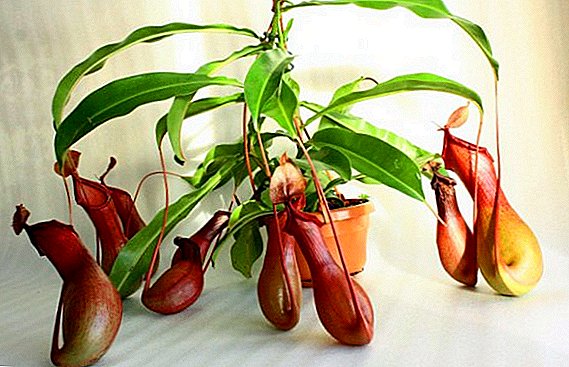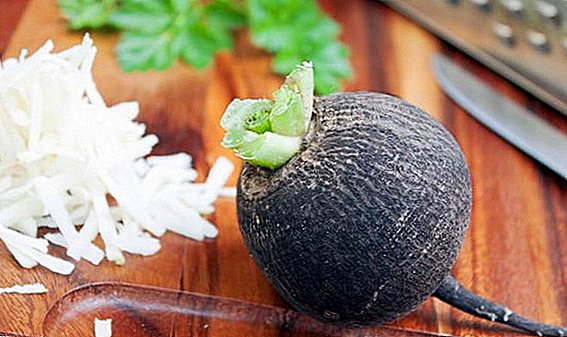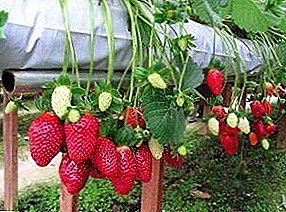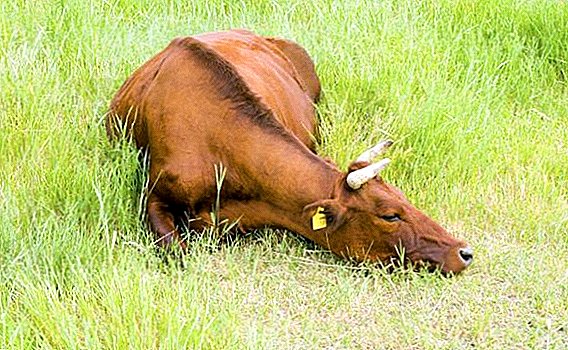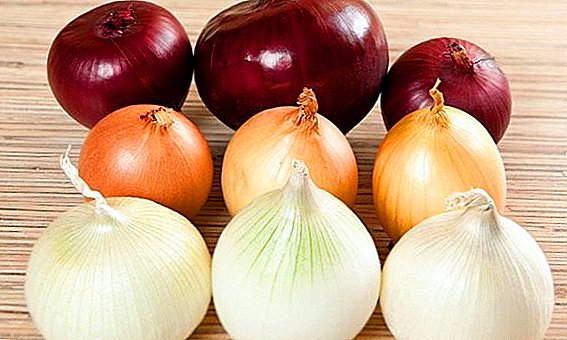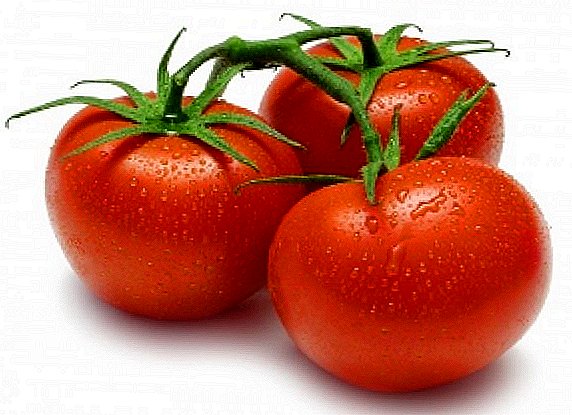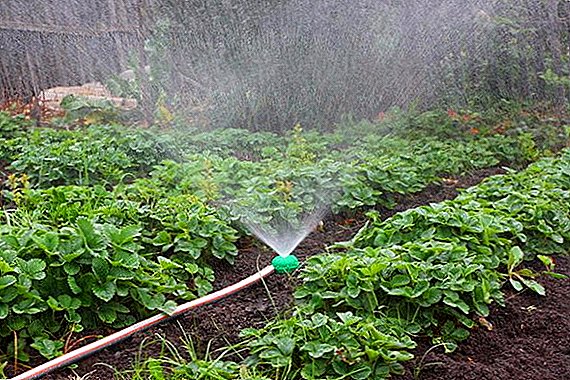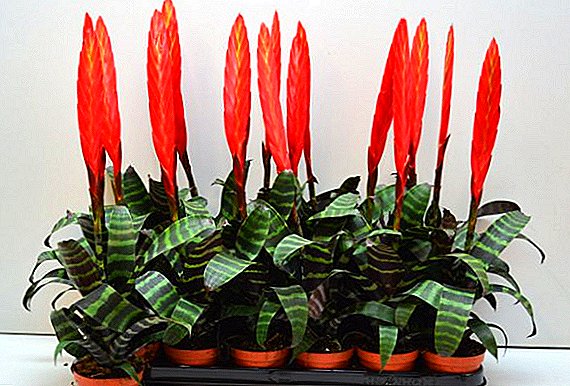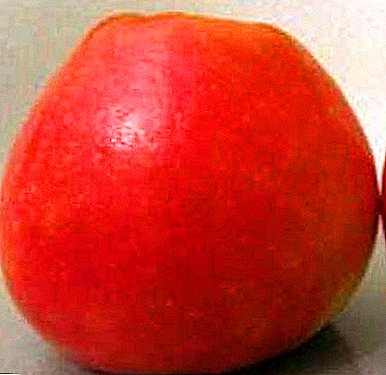
In our country, each region is different in its weather and climate in general. For more southern areas to pick up the type of work will not be.
Harder to choose for regions with long and cold winters. But domestic breeders also bred winter-hardy varieties that are not afraid of wind and frost. One of them is Flashlight.
What kind is it?
Flashlight refers to the autumn variety of apples. Ripening and eating fruits occur in the first half of September.
How to save the crop?
Autumn apples can lie for about 2-2.5 months under proper storage conditions.
- An important stage - the right to eat the harvest. Try to shoot it carefully. Wrap the fruit around the palm and scrolling remove from the branch. Do not remove the stem.
- Prepare simple wooden crates for storage.. The surface of the container must be dry and clean.
- Carefully inspect the apples. Only whole and healthy are suitable for storage, without dents, scratches, worms, decay.
- It is better to put apples in one layerand not at each other.
- Harvest is best kept in a cool place. (barn, cellar) with a temperature of 0 to 8 degrees.
Pollination
In order for the apple tree to bear fruit, it requires pollination.
Description of the variety Flashlight
It is not difficult to distinguish it by its characteristic features and features that we consider.

- Apple trees of medium height with a narrow crown and moderately dense crown and spreading branches.
- The bark is quite smooth, brown-olive color.
- Shoots pubescent, brown-brown, straight.
- Kidneys tightly pressed, conical, fleecy.
- The leaves are medium in size, egg-shaped, wrinkled, short-pointed, shiny. Petioles thin, elongated.
- The flowers are not large, star-shaped, pale white, very fragrant.
Fruit:
- Apples are not large, oval, one-dimensional.
- In September, the color of the fruit is purple-raspberry. During laying, it becomes more saturated.
- The stem is elongated, straight. The funnel is gray, small.
- The flesh is sweet and sour, juicy, contains a large percentage of sugars (up to 14-15% in one fruit), is rich in ascorbic acid (up to 24-25 mg per 100 grams).
- Most often, the fruits are used for fresh consumption, and are also suitable for preparing home-made cakes, compotes, jams, preserves. On sale and in production come less often.
Breeding history
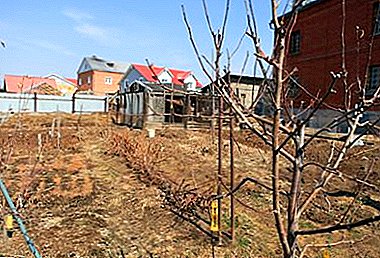 The variety appeared due to the work of domestic breeders: Tikhonova N.N. and Tolmacheva A.S.
The variety appeared due to the work of domestic breeders: Tikhonova N.N. and Tolmacheva A.S.
It was obtained in the 60s in the Krasnoyarsk Experimental Station for Horticulture from the crossing of the varietal variety 6774 (seedling Omsky 17) with Pepin saffron.
Natural growth region
The variety has been listed on the State Register. Irkutsk, Tomsk, Chita, Tyumen, Novosibirsk, Kemerovo regions, as well as around Krasnoyarsk Territory, the Republics of Tyva, Khakassia, Buryatia. The apple tree adapts well in forest-steppe areas. Not a bad crop brings when grown in the Central region.
Yield
The first harvest can be expected at 3-4 year after planting. A young apple tree produces less fruit than an adult tree.
Each year, the number of fruits collected from the tree may vary. On average, this figure ranges from 15 to 17 kg per sapling.
Planting and care
An important role for good growth and development of the apple tree is played by the choice of place and time for planting, as well as the implementation of proper care for the young tree. Special It is important to follow the recommendations in the early years of the apple tree..

- The best time to plant an apple tree is the end of April or the beginning of May.. The snow should have completely melted by then. Pay attention to that the top layer of soil was not frozen, otherwise it will have to wait a little with the landing.
- Tree grows well in the open sunny area. Under conditions of light deficiencies, the quality and quantity of the crop may decrease.
- The soil should be high or medium fertility, loose and light.. Clay heavy soil needs to be mixed with sand. Before planting, be sure to add organic fertilizer (peat or ash).
- For planting you need to dig a deep hole (about 50 to 50 cm). The top layer of the earth to put in one direction, and the bottom in another. At the bottom of the pit make an earthen slide, apply fertilizer. The seedling is placed vertically in the center, the roots are straightened.
It will be more convenient to engage in landing together. In the pit, the lower layer of the earth is first poured, and then the upper one. Pay attention to the root neck. It must remain above the top of the ground.
- If you are going to plant several apple trees at once, the distance between the seedlings should be at least 4 meters, since the root system is spreading and extensive.
Care:
- Water an apple tree is needed regular and moderate. If the tree is young, attention to watering should be paid more.
So that the water could get to the roots better, one can designate a rim around the trunk the size of a hole's diameter prepared for planting, that is, about 50 to 50 cm. Next to the apple tree, make special grooves to prevent water from stagnating..
- Carry out regular maintenance of the ground. It needs to weed more often, remove weeds and loosen. Loosening the soil in dry summer is important for breathing and better soil moisture. In rainy weather will help avoid stagnant moisture.
- Every year, prune the apple tree. The first pruning can be done immediately after planting a young tree in the ground (about a third of the trunk).
Then it should be carried out every spring until the first buds appear. Pruning will help the formation of the correct crown, as well as serve as prevention from diseases and pests.
- Every spring, fertilize the tree with nitrogenous, potash fertilizers. The first dressing can be done during the landing, and the next to be carried out next year.
If the soil is not rich in minerals, in early autumn you can carefully dig the ground next to the apple tree and apply fertilizer.
- Variety Flashlight has excellent winter hardiness. It is even better tolerate the cold winter than the dry summer. In the sixties, during severe frosts, when the air temperature fell below -25 -30 degrees, not a single case of the death of apple trees was recorded.
But mulching the soil under young trees before the onset of cold weather will only benefit.
Diseases and pests
 remember, that disease prevention is much easier and more enjoyable than treatment.
remember, that disease prevention is much easier and more enjoyable than treatment.
Do not forget to properly care for the tree, fertilize, do pruning in the spring, observe the correct watering.
- Among the common dangerous pests are: moth, green aphid, hawthorn, leaflet, ticks, leafworm, mole. Spraying with insecticides (karbofos, chlorophos) is effective for combating these insects.
Not bad help people's proven tools: a decoction of their tops of tomato or bitter wormwood infusion. It is also possible to process wood for the purposes of prophylaxis, especially if there are affected apple trees in your area or in your neighborhood.
- Apple trees are not infrequently affected by fungal diseases, especially with improper care. You can cope with scabs by treating Topaz.. For powdery mildew, spraying of copper sulphate solution helps.
- Among the pests are dangerous not only insects, but also rodents who love to eat the bark in the winter. For prevention, you can whitewash young trees with a solution of chalk, and process older apple trees with lime mortar.
 The flashlight has long been one of the sought-after varieties and is grown in many household plots.
The flashlight has long been one of the sought-after varieties and is grown in many household plots.
He is preferred due to simple care, good taste, abundant crops.
The apple tree is distinguished by excellent winter hardiness.
Her long winters, wind and frost are not terribletherefore, it can be grown in many regions of our country.


